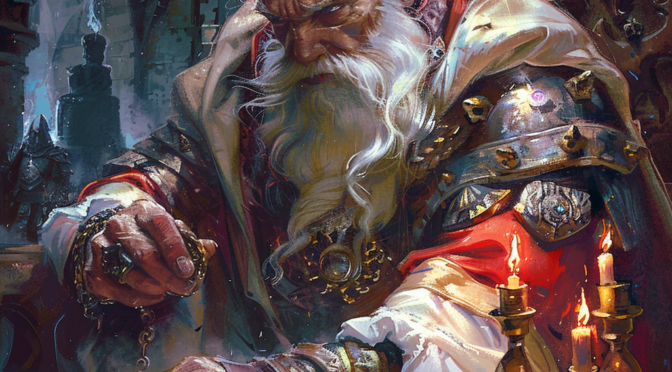FreeD6 uses ordinary language to describe the conflicts and events of an adventure narrative. The conflict structure uses die codes (ranks) and difficulty numbers to turn narrative actions into a game. The action point economy allows players to influence the dice or to introduce elements to the narrative. The die codes, difficulty numbers, and result points help the players and Game Master determine how strong, fast, or effective something is within the context of the game.
Ordinary Language
The adventure narrative consists of a scenario involving characters who make decisions and take actions that advance the events of the narrative. All elements within the narrative are described in ordinary language and supported by a dice game. Characters and elements are described by a narrative background. The background description determines which abilities apply to the character or element.
The use of ordinary language allows elements to affect the narrative in a way that can be interpreted by the Game Master and communicated to the players using commonly understood words. This provides the abilities and effects of game elements with a flexible and organic application instead of a mechanical restriction. This is the narrative effect.
The use of dice and difficulty numbers transforms the descriptions into a game. This introduces an element of chance outside the control of the players or Game Master and provides a guide for interpretation. This is the mechanical effect.
Conflict Structure
Adventure games revolve around conflict. FreeD6 uses abilities, conditions, and dice to turn conflicts into a game. The main conflicts in a game are physical, social, and mental.
Physical conflicts include melee combat, ranged combat, maneuvering around obstacles, and piloting vehicles. Normal physical abilities are described by the Strength and Dexterity scores.
Social conflicts include trading arguments in an attempt to persuade a third party, convincing an NPC to take action on your behalf, and coercing or manipulating NPCs to take actions. Normal social abilities are described by the Presence and Wits scores.
Mental conflicts include defeating traps, shadowing suspects, trailing a target, deceiving others, and conducting investigations. Normal mental abilities are described by the Intelligence and Perception scores.
Vehicles, gear, and extranormal abilities both modify normal abilities and act as opponents.
Scale of Action
Elements must have parity of scale in order to affect each other. They must be of a similar size, speed, order of magnitude, social importance, hardness, or whatever other metric is being affected. When a lower-scale element attempts to affect a higher-scale element, if the Game Master permits the attempt, the result will always be less effective because of the smaller scale of the effect. When a higher-scale element affects a lower-scale element, the results will always be more effective.
Action Points
The Game Master controls the scenario and the action of all of the elements within the game. Players control only the actions of their characters. In order to provide players greater agency within the adventure narrative, and to mitigate the randomness of the dice, players have access to action points.
Action points are used to give players extra dice for skill checks and to create advantageous narrative effects. Action points are also used as a reward for accepting a mechanical penalty driven by the character’s narrative background.
Die Codes
Die codes are used to quantify game elements that possess a range of effect. Die codes consist of a number of six-sided dice, followed by “D”, and possibly followed by a number of adds. For example, a die code of 3D+2 means to roll 3 dice, add them together, and add 2 to the total. This will generate a value between 5 and 20.
Difficulty Numbers
Difficulty numbers are used to quantify game elements when it is not appropriate to assign them a die code. Elements that are not variable, where random factors are not influential, or which are relatively insignificant to the narrative use the fixed value of a difficulty number to quantify their mechanical influence. The difficulty number is also referred to as the resistance value.
Result Points
Result points quantify the effects of an action. When a die code is used in an action, the sum of the dice roll is compared to either a difficulty number or to the sum of another dice roll. The difference between the two values is the result points. Result points are used by the Game Master to interpret the outcome of the action in favor of the element with the higher value.
